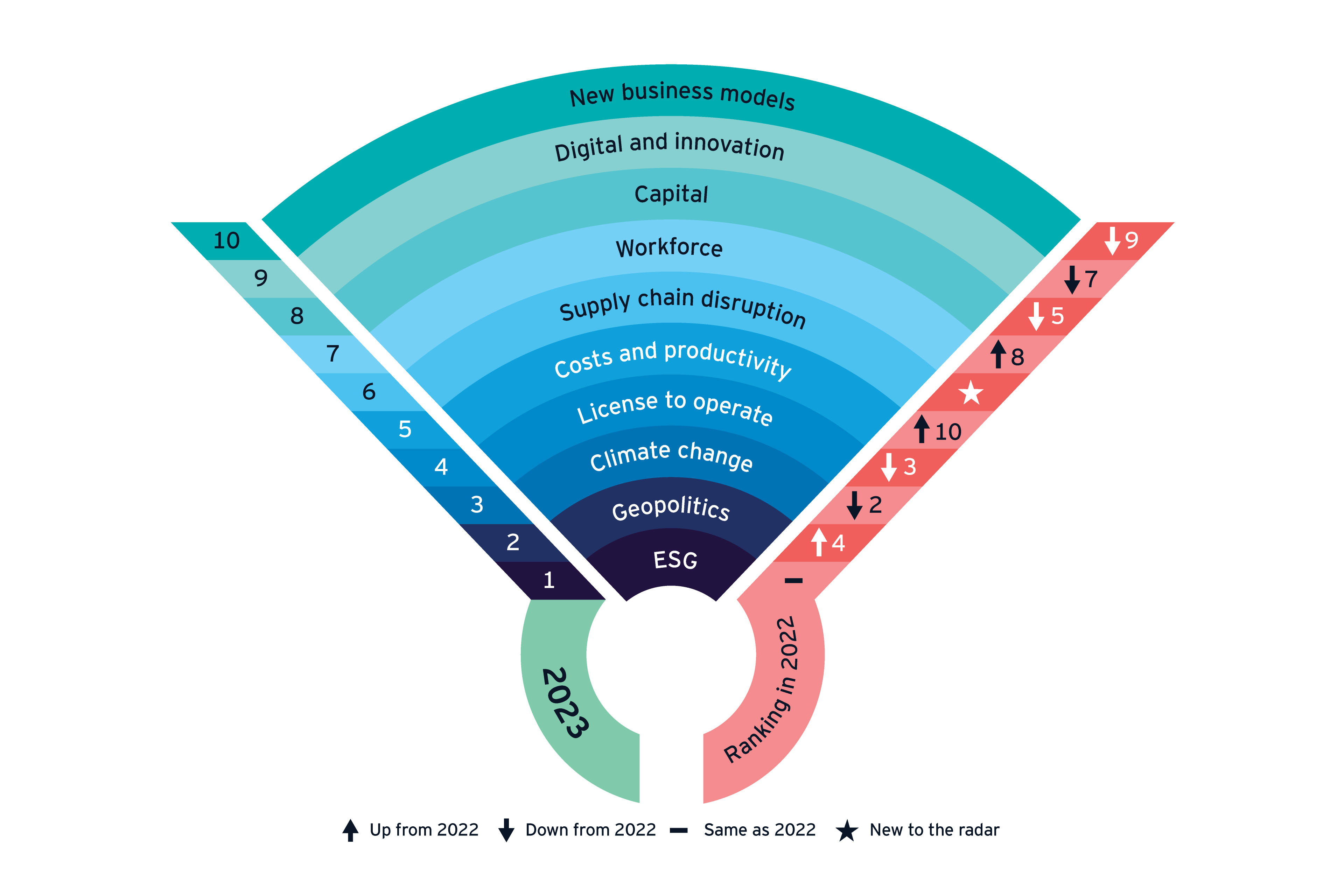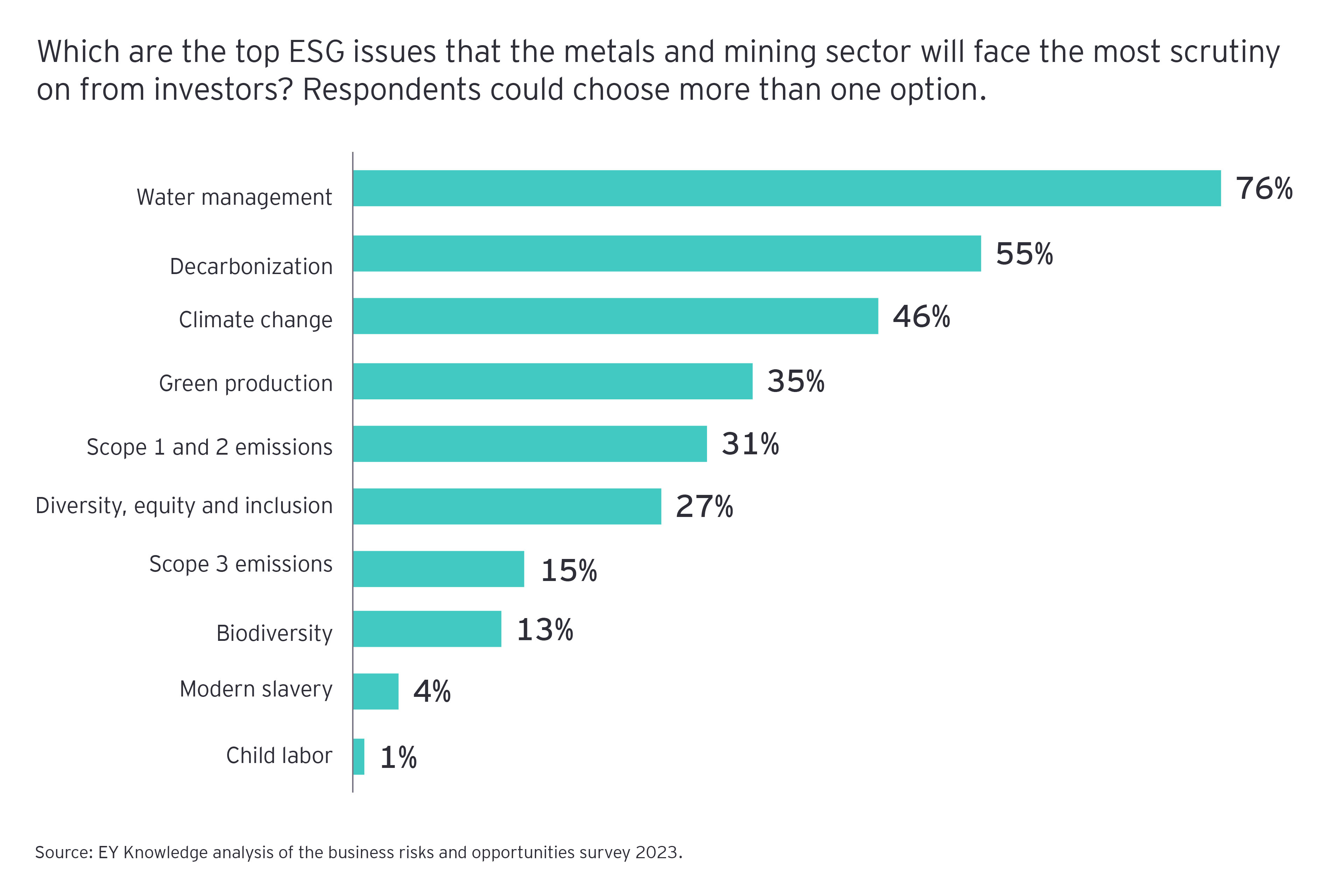Trend 2: Geopolitics
Global conflict and trade tensions highlight opportunities to strengthen relationships.
Geopolitics’ move up the ranking comes as miners feel the impact of the war in Ukraine, as well as US-China tensions and rising resource nationalism. Geopolitical risk should now be embedded within broader strategic planning, with clear ownership of this risk within the organization.
With many geopolitical factors beyond the control of mining and metals companies, this is a difficult risk to mitigate. The greatest opportunities may lie in forging closer ties with government, increasing collaboration with stakeholders, including trade and sector groups, and exploring the potential of government incentives and co-investments.
Trend 3: Climate change
Net-zero pathways are set, but achieving ambitions will require a realistic and balanced strategy.
An accelerated decarbonization agenda, and sharper focus on reporting emissions, creates a new urgency around better mitigating climate change risk.
This is a challenge mining and metals companies have become progressively better at managing, but there are still opportunities to improve. For example, not enough miners are taking action to minimize the physical risks of climate change, such as wildfires and flooding, which may threaten operations.
More miners are setting net-zero ambitions, but pathways to achieve these are sometimes unclear. Companies that explore a mix of options, including carbon offsets, partnering up and down the value chain and collaborating with suppliers and vendors to monitor Scope 3 emissions, can build a proactive strategy to address a risk that is likely to become even more complex.



